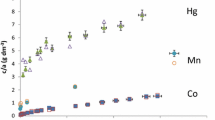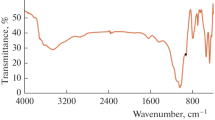Abstract
Schofield and Samson1 have indicated that the edge face of kaolinite crystals should, under acid conditions, adsorb one chloride ion for each 33 Å. 2. They obtained results which showed that on the acid side of neutrality the positive edge charge of a potassium kaolinite was such that it exceeded the negative adsorption of chloride ions resulting from the repulsion of these ions from the negative cleavage face. Further, these authors noted that for conditions more alkaline than about pH 6.5 in 0.005 M sodium chloride the clay exhibited a negative adsorption. When Schofield's2 theory was applied to these results, a surface area of 25 m.2/gm. was obtained and this was lower than the 39 m.2/gm. obtained by low-temperature nitrogen adsorption. The constant negative adsorption for alkaline conditions was interpreted as being due to the disappearance of positive edge charges. Work reported here, however, shows a positive adsorption dependent on concentration under conditions as alkaline as pH 10. When allowance is made for this positive adsorption the correct value is obtained for the surface area.
Similar content being viewed by others
References
Schofield, R. K., and Samson, H. R., Disc. Farad. Soc., 18, 135 (1954).
Cashen, G. H., Trans. Farad. Soc., 55, 477 (1959).
Author information
Authors and Affiliations
Rights and permissions
About this article
Cite this article
QUIRK, J. Negative and Positive Adsorption of Chloride by Kaolinite. Nature 188, 253–254 (1960). https://doi.org/10.1038/188253a0
Issue Date:
DOI: https://doi.org/10.1038/188253a0
- Springer Nature Limited
This article is cited by
-
Isoelectric point of the edge surface of kaolinite
Nature (1975)
-
Discreteness of Charge on Clay Surfaces
Nature (1965)





